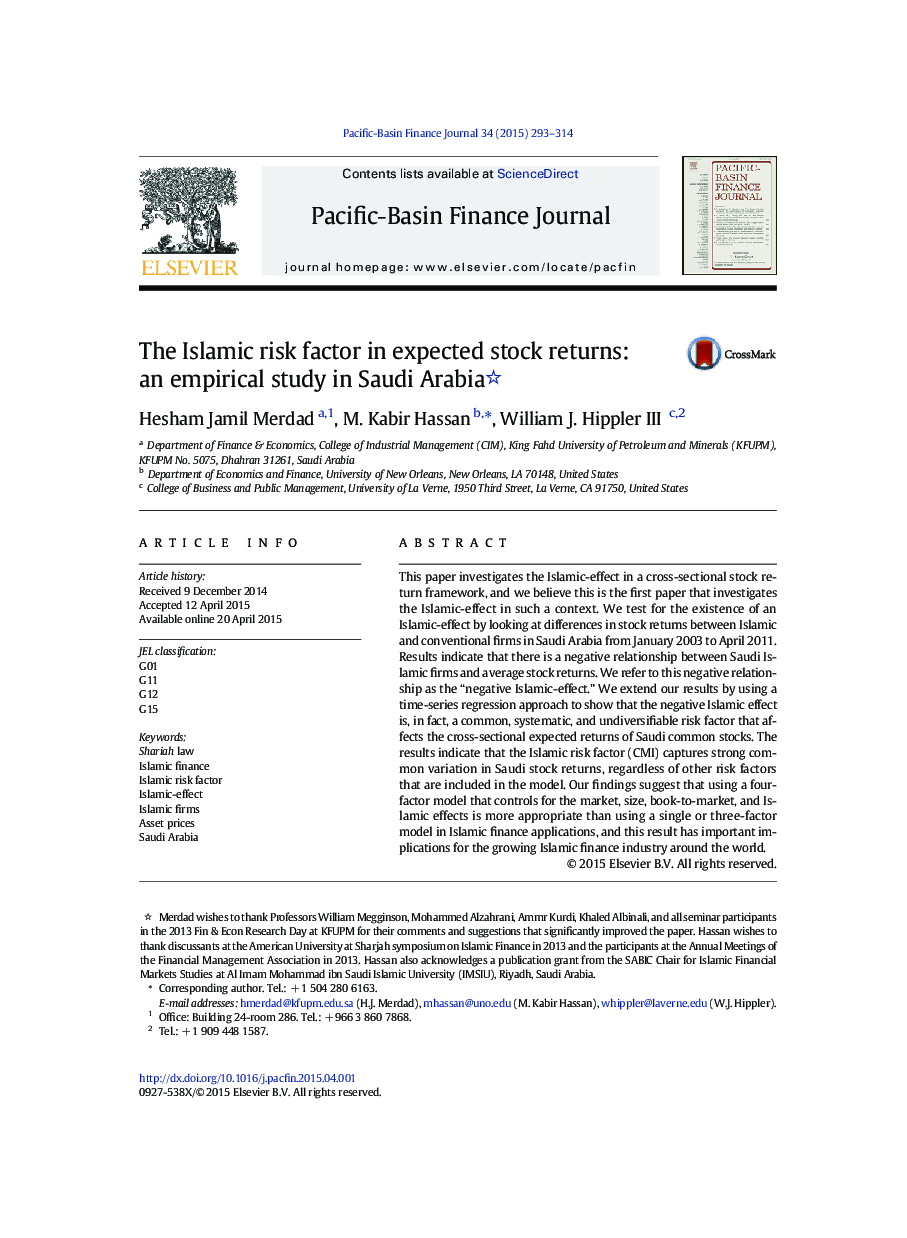| Article ID | Journal | Published Year | Pages | File Type |
|---|---|---|---|---|
| 975320 | Pacific-Basin Finance Journal | 2015 | 22 Pages |
•We examine risk-return differences between Islamic and conventional stocks.•Saudi Arabia is the ideal market for testing our proposed model.•There exists a negative relationship between Islamic firms and average returns.•The Islamic risk factor is a common, systematic pricing factor.•We propose a unique asset-pricing model for economies utilizing Islamic finance.
This paper investigates the Islamic-effect in a cross-sectional stock return framework, and we believe this is the first paper that investigates the Islamic-effect in such a context. We test for the existence of an Islamic-effect by looking at differences in stock returns between Islamic and conventional firms in Saudi Arabia from January 2003 to April 2011. Results indicate that there is a negative relationship between Saudi Islamic firms and average stock returns. We refer to this negative relationship as the “negative Islamic-effect.” We extend our results by using a time-series regression approach to show that the negative Islamic effect is, in fact, a common, systematic, and undiversifiable risk factor that affects the cross-sectional expected returns of Saudi common stocks. The results indicate that the Islamic risk factor (CMI) captures strong common variation in Saudi stock returns, regardless of other risk factors that are included in the model. Our findings suggest that using a four-factor model that controls for the market, size, book-to-market, and Islamic effects is more appropriate than using a single or three-factor model in Islamic finance applications, and this result has important implications for the growing Islamic finance industry around the world.
